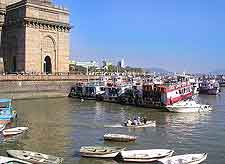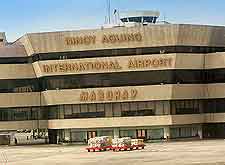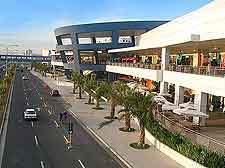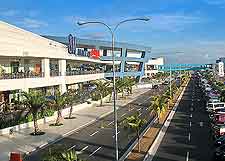Getting Around, Manila Travel, Transport and Car Rental
(Manila, National Capital Region, Philippines)

Manila receives plenty of visitors and maintains a busy international airport, in a bid to make connections with the city as easy as possible from destinations across the globe. Though the international transportation infrastructure operates relatively efficiently, the same is not necessarily true of the public transport infrastructure, with local travel options in central Manila being somewhat unorganised at the best of times.
Travelling around the city is easy enough once you get to grips with Manila's often chaotic transportation network. Train and taxi transport is straightforward to use, although the local bus system presents challenges for tourists looking to travel short distances, with its many lines and different styles of vehicles to choose from.

Ninoy Aquino International Airport (MNL) / Arriving by Air
Address: NAIA Road / Ninoy Aquino Avenue, Psacay City 1300, Manila, Philippines
Tel: +63 2 877 1109
Manila's international airport is situated just 11 km / 7 miles from the downtown area and provides the chief gateway for entry to the
Philippines from overseas. The two-terminal facility offers all essential amenities including ATMs, bureaux de change, shops and restaurants. There are a number of ways to get to the city from
Ninoy Aquino Airport, with a taxi being the most convenient transport option. Avoid the private taxis and be sure to get the official registered cabs that are available immediately outside of the airport building. The duration of the journey to the city varies from 30 minutes to a couple of hours, depending on traffic and the time of day.

Car Rental
There are reputable international car hire agencies located at the airport and a large selection of independent companies in the city, giving visitors a wide choice of standards, vehicle makes and prices to choose from. Driving in Manila can be a little stressful to say the least, with hectic traffic conditions at rush hours and some erratic driving habits from the locals.

Buses and Coaches
Local bus transport in Manila is operated privately and can be difficult for visitors to get to grips with, as buses all offer different routes, use different vehicles and charge different prices. The small minibus-style vehicles known as 'jeepneys' travel according to flexible routes and leave when full. They can be flagged down anywhere along their route and passengers can get off at any point simply by alerting the driver.
Trains
The city has both Mass Rail Transit and Light Rail Transit systems that transport passengers to various parts of Manila. However, their efficiency is hindered somewhat by the nature of the infrastructure supporting them, which is still in developmental stages. From the Metro Manila station, it's possible to travel by train to Quezon, Caloocan, Makati and other major national and regional destinations.
Taxis
Regular cabs can be hailed in the street or hired from stands located at strategic points around the city, such as major hotels, train stations, shopping centres and the airport. There are lots of unlicensed cabs around and these are best avoided in favour of registered vehicles with meters. Some drivers may try telling you that the meter is broken - this is generally a ruse and visitors are best declining their services. Tipping taxi drivers is usual practice.
 Manila receives plenty of visitors and maintains a busy international airport, in a bid to make connections with the city as easy as possible from destinations across the globe. Though the international transportation infrastructure operates relatively efficiently, the same is not necessarily true of the public transport infrastructure, with local travel options in central Manila being somewhat unorganised at the best of times.
Manila receives plenty of visitors and maintains a busy international airport, in a bid to make connections with the city as easy as possible from destinations across the globe. Though the international transportation infrastructure operates relatively efficiently, the same is not necessarily true of the public transport infrastructure, with local travel options in central Manila being somewhat unorganised at the best of times.


